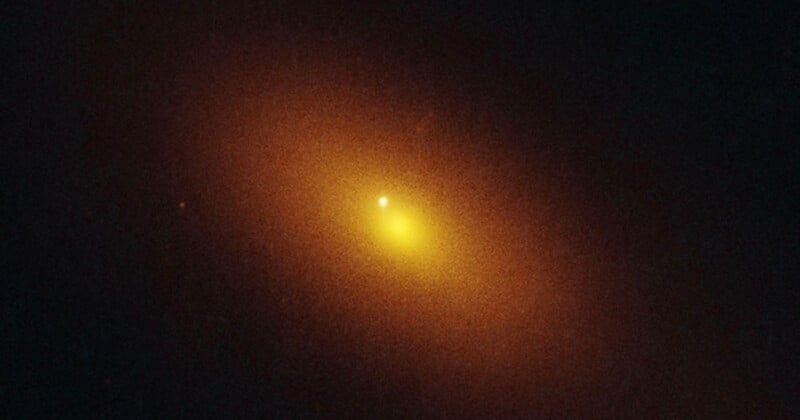Hubble Captures Rogue Black Hole ‘Eating’ a Star

Astronomers have captured a supermassive black hole tearing a star apart — and doing so far from where the mysterious celestial objects are typically found.
The image, obtained using NASA’s Hubble Space Telescope and supported by observations from multiple observatories, marks the first time a rogue supermassive black hole has been directly associated with a stellar destruction event outside a galaxy’s core.
The event, dubbed AT2024tvd, took place in a galaxy approximately 600 million light-years from Earth. The black hole responsible has a mass about one million times that of the Sun, but unlike most of its kind, it was not located at the galaxy’s center. Instead, it was found some 2,600 light-years from the nucleus — a surprising offset confirmed by Hubble’s imaging.
This black hole revealed itself by disrupting a passing star in what is known as a tidal disruption event (TDE). When a star strays too close to a black hole, gravitational forces stretch and tear it apart, releasing a flare of energy detectable across space.

The flare from AT2024tvd was first detected by the Zwicky Transient Facility in California and later observed by the Chandra X-ray Observatory and the Very Large Array. But it was Hubble that pinpointed the flare’s origin as off-center in the galaxy — providing the first direct image of a TDE caused by a supermassive black hole not located in a galactic nucleus.
“AT2024tvd is the first offset tidal disruption event (TDE) captured by optical sky surveys, and it opens up the entire possibility of uncovering this elusive population of wandering black holes with future sky surveys,” says lead study author Yuhan Yao, a postdoctoral fellow at the University of California, Berkeley.
These wandering supermassive black holes are theorized to exist but are difficult to detect unless they consume a nearby object and emit a flare of light. “Theorists have predicted that a population of massive black holes located away from the centers of galaxies must exist, but now we can use TDEs to find them,” according to Ryan Chornock, a UC Berkeley astronomer and study co-author,
Mashable notes that the galaxy hosting AT2024tvd already contains a central black hole around 100 million times the mass of the Sun. The newly imaged black hole is not gravitationally bound to this larger one, ruling out a binary system. Its presence suggests it may have originated from a smaller galaxy that merged with the host or may have been displaced during a past gravitational interaction.
Such scenarios raise questions about the formation and movement of black holes across galaxies. Astronomers hope further observations of TDEs will help locate more of these hidden objects and provide insight into the dynamics of galaxy evolution.
The findings will be published in an upcoming issue of The Astrophysical Journal Letters.